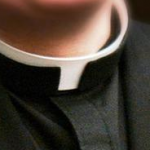Lost Potential
 (Part 1 of 2) Back when I was a teenager, I used to play Dungeons & Dragons with a group of friends. D&D, for those who have never played it, is essentially a pen-and-paper version of World of Warcraft. Instead of a computer running the game, that role in D&D was served by a person—the “Dungeon Master,” or DM—whose job it was to map out a location in advance and fill it with monsters, traps, and other characters and events, and keep that material hidden from the players until they reached certain points in the game. Whereas computer games display information visually to the players as they wander through the game world, in D&D the DM simply describes what happens, according to his or her pre-established plan and a set of fixed rules governing things like combat.
(Part 1 of 2) Back when I was a teenager, I used to play Dungeons & Dragons with a group of friends. D&D, for those who have never played it, is essentially a pen-and-paper version of World of Warcraft. Instead of a computer running the game, that role in D&D was served by a person—the “Dungeon Master,” or DM—whose job it was to map out a location in advance and fill it with monsters, traps, and other characters and events, and keep that material hidden from the players until they reached certain points in the game. Whereas computer games display information visually to the players as they wander through the game world, in D&D the DM simply describes what happens, according to his or her pre-established plan and a set of fixed rules governing things like combat.
One of my friends was a particularly good DM. He would create settings full of portentous omens, intrigue, and mysterious characters. Seemingly random encounters would lead to unexpected coincidences. The world he created seemed richly populated with deeper meaning, and my friends and I loved exploring it.
But we ultimately discovered that there was no deeper meaning; there was no there there. He was making it all up on the fly, and when we started scratching beyond the surface, improbable barriers such as invulnerable gods and invincible monsters began to block our path. The narrative structure of the world collapsed under its own weight.
I’m reminded of all that by the final season of Lost. Lost, I think, illustrates a trap that the creators of D&D dungeons and network television series alike are apt to fall prey to: it is much, much more tempting to build suspense than to resolve it.


